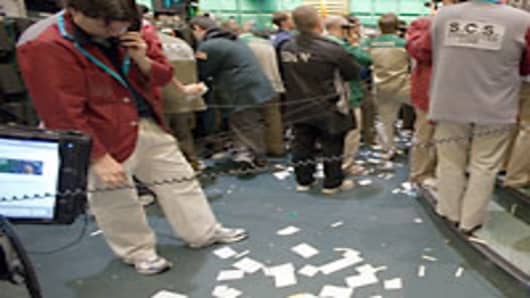If in doubt, blame speculators. That has been the popular political mantra in recent years whenever commodity and energy prices have soared. And events have now poured more fuel on the fire.
On Monday the Commodity Futures Trading Commission announced that it had uncovered evidence that a trading house engaged in oil price market manipulation. While the alleged offences occurred three years ago, it has strengthened popular fear that “speculators” are now pushing around prices – to the detriment of everyone else.
But while politicians wring their hands, it is not necessarily the hedge funds that should be watched now. Instead, the more interesting question is what is under way with the fast-growing world of commodity index funds.
Ever since 2008, when Michael Masters, a hedge fund manager, first testified to Congress about the impact of index investors on price levels, US regulators have been trying to assess how these funds do – or do not – affect prices. The issue is now being scrutinised by regulators and central bankers too: the Financial Stability Board, for example, is now quietly analysing investment flows in commodities.
And while such work is still preliminary, it could spark debate in coming months – for reasons both good and bad. “The nature of investors has changed in a way that affects price movements,” says the head of one central bank. “We need to understand more.”
Some work being conducted by Wei Xiong and Ke Tang*, two economists at Princeton university, offers interesting food for thought. As Wei and Ke point out, until a decade ago, commodities prices were generally set by trading houses and end users, along with a small(ish) group of specialised hedge funds.
This did not mean that commodity prices always moved rationally. Indeed, when supply and demand fundamentals changed swings occurred. But turmoil in one sector was not necessarily correlated with another. Or as they write: “Prior to the early 2000s, despite liquid futures contracts traded on many commodities, their prices provided risk premium for idiosyncratic commodity price risk; and had little co-movements with stocks.”
But from 2004, the market changed: new investors dived into commodities using index funds (which duly swelled from $15bn in 2003 to $200 billion odd today). Some investors did this because commodities appeared to offer equity-like returns, hedged against inflation. Another pull was portfolio “diversification”: because commodities had not previously been correlated with other asset classes (or even each other), they were seen as attractive.
However, – ironically – this search for “uncorrelated” assets became a victim of its own success: as index funds swelled, commodities started to display “greatly increased price co-movements”. Between 1986 and 2004, for example, the return correlation between soybeans and oil was near to zero; from 2004 and late 2009 it surged to nearly 0.6, as correlations between oil and cotton, live cattle and copper jumped to 0.5, 0.4 and 0.6 respectively.
Now, this might simply reflect surging, across-the-board demand. Wei and Ke concede this has played a role (and, unsurprisingly, fuelled correlation between emerging market assets and commodities). But they point out that the Chinese commodities markets – which are off-limits to foreigners and thus also index funds – have been far less correlated than western markets. “Off-index” commodities are less correlated too. Thus, they conclude that the index funds have fuelled these “price spillover” effects, inside the commodities world, but between commodity and non-commodity assets too (say, in response to monetary policy).
Now, such arguments are controversial. The US Federal Reserve, for example, denies any link between between monetary conditions and commodity prices. Some economists also question whether there is any real link between index trading and prices. Since 2008, the CFTC has asked financial institutions to report their long and short index positions. However, this has not shown any obvious correlation with price levels; on the contrary, as my colleagues Javier Blas and Gregory Meyer have observed, net “longs” in oil can coincide with falling oil prices.
However, suspicions are rising among some that this may reflect flaws in the CFTC data, and some potentially very important research is now under way in this respect. Regardless, the point about rising correlation is hard to dispute – or ignore. It should certainly give the politicians – and investors – pause for thought. Not least because it is harder to change herd behaviour than to clamp down on a rogue hedge fund. Particularly when that herd behaviour is shifting in some subtle – but important – ways.


